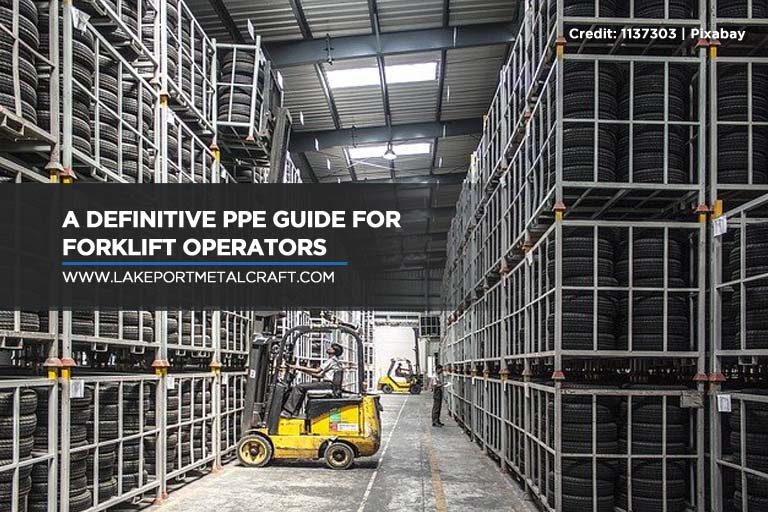The latest statistics show that North American industrial workplaces aren’t getting any safer. According to the 2020 Report on Work Fatality and Injury Rates in Canada, 1,027 workers died of work-related causes in 2018, indicating a 13.5% increase from the 2017 figures. In the USA, the numbers went up by 6% from 2017 to 2018, with a total of about 8,000 forklift-related injuries all throughout the country.
With the recent numbers, workplace regulatory boards are calling for a faster, more transparent and integrated effort in updating workplace safety information. This reinforces the importance of ensuring that safe work procedures are in place and in effect in all industrial workplaces.
Traditionally, April 28th is the annual World Day for Safety and Health at Work. But we should observe this noteworthy theme each day. To begin, we need to dress appropriately for our jobs. Forklift operators, among many other industrial workers, deserve quality protection from the harsh realities of their work environment. In addition to the essential training required, warehouse employers are responsible for providing them with proper personal protective equipment (PPE).
The Whys of Forklift Safety
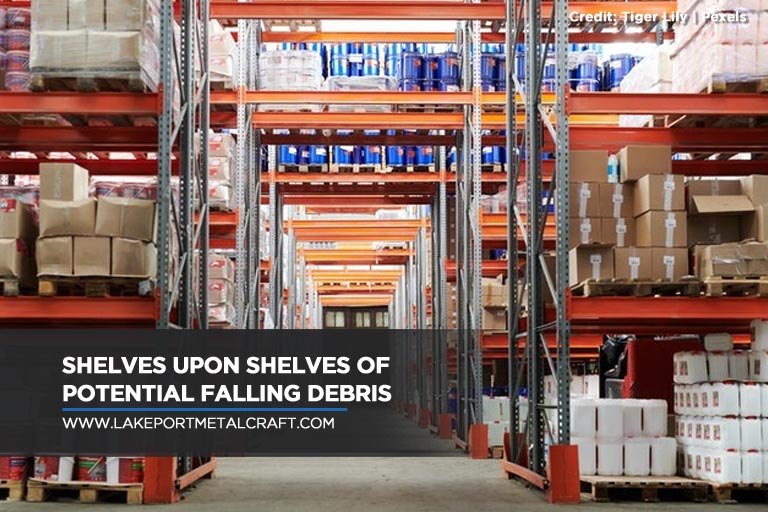
Forklift injuries and fatalities are due to a number of accidents such as underride collisions, in-warehouse vehicular accidents, and being crushed by falling debris. Colliding with other obstacles such as overhead beams, door frames, shelves, containers, and other solid obstacles is also a major issue for forklift operators operating indoors. Most cases are unintentional incidents, unless your workers are deliberately ignoring safety procedures for operating a forklift.
PPE is not the only way to protect your workers from these hazards, but it should be part of a bigger workplace safety strategy that enforces a way of saving lives while doing work that has danger on a daily basis written all over it. While PPE neither prevents nor eliminates an incident or a hazard, it actually minimizes the severity of an injury. It also helps reduce fatality numbers in the workplace.
Safety Guidelines for Forklift PPE
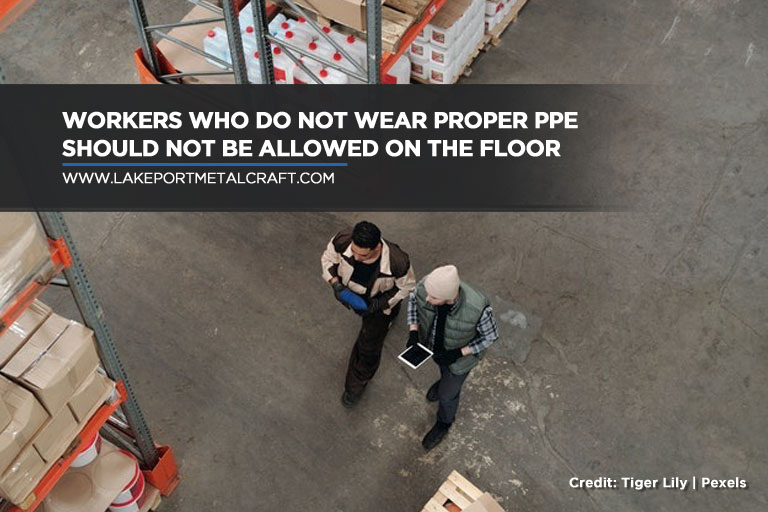
US and Canadian offices for occupational safety and health strongly encourage all workplaces to follow a strict and appropriate PPE program that effectively mitigates work-related injuries and deaths. A manager or a supervisor must be assigned to create a dress code that outlines the daily clothing and PPE requirements for your workers. As a warehouse employer, you need to make the following considerations when designing a PPE program for your workers:
1. Think of their daily responsibilities. Choose the right piece of equipment to match the job hazards and safety responsibilities of operating a forklift. While most operators focus on one job alone, there are also others who are assigned multiple tasks, exposing them to more than one safety hazard.
A dialogue between you and your workers is also important so that everyone knows about the safety concerns for each specific job. Forklift operators should know about the importance of cleanliness and organization within the warehouse, as well as seasonal workplace hazards. Safety responsibilities should rely on both the operator and the employer.
2. Safety is your top priority. Remember that wearing PPE should not in itself create danger. Brightly colored or reflective clothing is a must for forklift operators, as it will visibly alert other operators and workers that they’re moving, or might become an obstruction, within the area. Low tolerance must be observed for workers who do not comply with the prescribed workplace attire and PPE requirements. The PPE should cover your operators from head to foot.
3. Physical comfort is a must. Forklift operators have to be comfortable throughout their shift. Their attire should be durable and lightweight enough for comfort, while making sure that no piece of clothing gets stuck or pulled by industrial equipment, which could put their hands, head, or other body parts in danger.
Not everybody is keen on fashion, but every piece of PPE should be decent and comfortable enough to be worn altogether. Nobody wants to wear unnecessarily heavy or poorly fitted PPE, so provide your workers with flexible protective gear choices, as long as you adhere to current legislation and industry standards.
4. Maintain and inspect regularly. The effectiveness of the PPE can only be ensured if they are maintained conscientiously, and inspected regularly. You need to identify damages or possible malfunctions before having your workers use the PPE. Discard PPE items that are not up to manufacturer’s specifications. There should also be procedures for cleaning, repair, storage, testing, and replacement for PPEs.
5. Be honest and realistic. Do not give your workers a false sense of security by making them believe their PPEs are fine when the truth is closer to otherwise. Always conduct regular risk assessments, as well as audits on the PPE program to make sure that the PPE you provide to your forklift operators match the nature of their responsibilities, as well as the immediate and remote hazards their jobs entail.
The Essential PPE for Forklift Operators
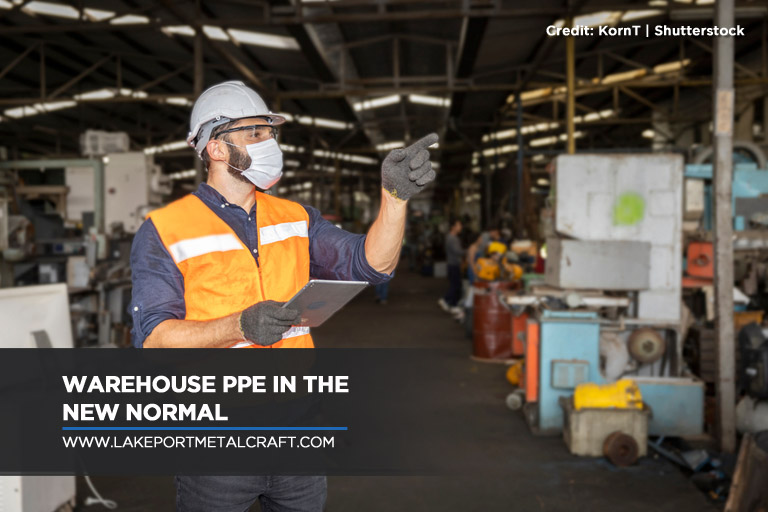
The use of proper work attire and PPE applies to all industrial workers. This includes forklift operators, truck loaders, warehouse workers, pallet jack operators, dockyard hands, and employees in similar roles.
1. Eye and Face Protection – Safety glasses or face shields must be worn when operating around concrete, foreign chemicals, or other foreign matter that may damage or irritate the operator’s eyes. Whether indoors or outdoors, using safety goggles ensures a clear field of vision and line of sight for the operator.
2. Head Protection – Hard hats are a staple protective piece in warehouses, manufacturing facilities, and construction sites. While forklifts usually have an overhead covering, operators still need to wear a hard hat, just in case objects start falling while they’re outside the machine, or when the forklift tips over. Always inspect your hard hats for defects, and keep them in good condition.
3. Hand Protection – Gloves protect the hands from scratches and burns, and must offer enough flexibility for forklift operators to grip and operate various controls. Gloves also protect workers from possible grease, oil, and other liquid substance spillages. Forklift operators who work around concrete may use heavy-duty rubber gloves, while those working around electrical hazards must put on insulated gloves with protective gloves. During wintertime, workers must cover up their hands to keep themselves warm and functional.
4. Foot Protection – Durable footwear, like steel toe boots, should be worn at all times, anywhere at the workplace to lessen the impact of falling objects on the operator’s toes and feet, and to prevent slipping and punctures.
Who Pays for the PPE?
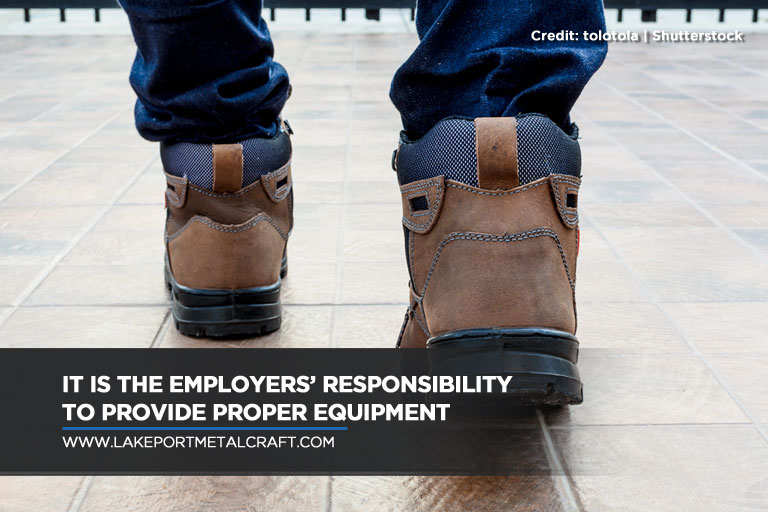
Employers are responsible for providing clear guidelines on what PPEs are needed at the workplace, as well as procedures for maintaining and cleaning equipment, and worker training for the proper use of PPE. However, the law on who takes financial responsibility over PPEs is not uniform in all industrial workplaces all over the world.
The Occupational Safety and Health Administration (OSHA) in the USA requires all employers across the board to provide for basic PPEs themselves. In Canada, employers are advised to contact the appropriate occupational health and safety agency in their jurisdiction to ensure that their PPE provisions are in total accordance with the laws.
We Care About Your Workers’ Well-Being!
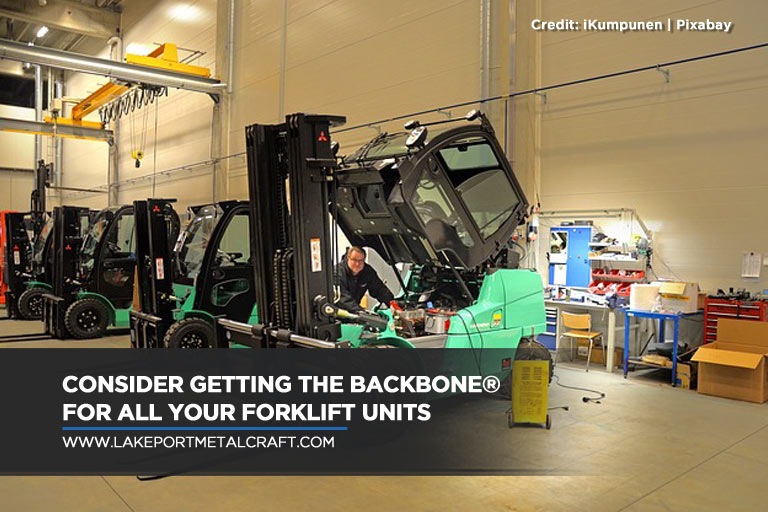
Stand up forklifts are the backbone of what we do at Lakeport Metalcraft Inc. To augment safety measures in your workplace, consider getting The Backbone® to ensure that your operators are protected from injuries caused by underride accidents. Call 416-587-5809, or email n.nopper@LakeportMetalcraft.com today!

